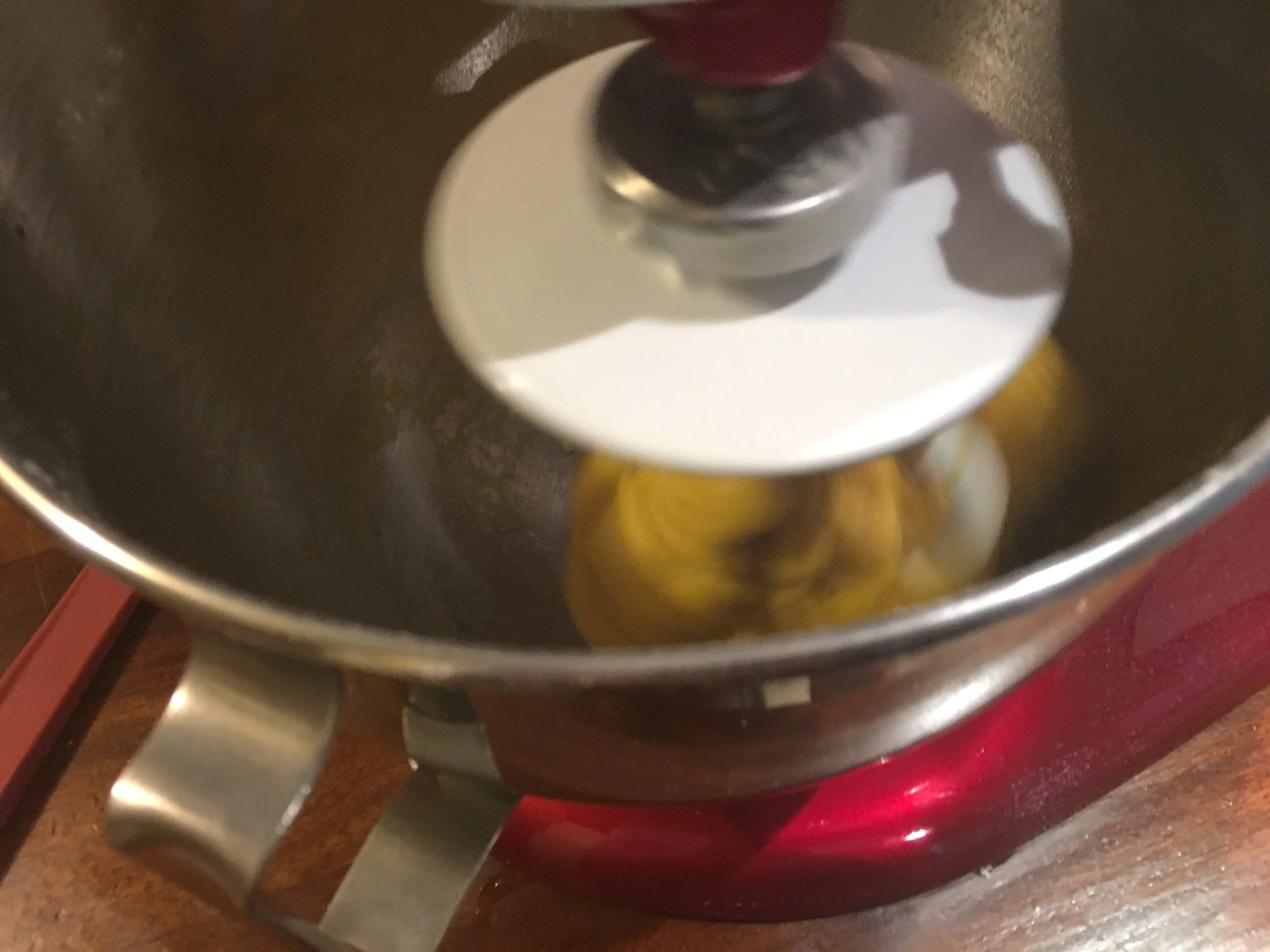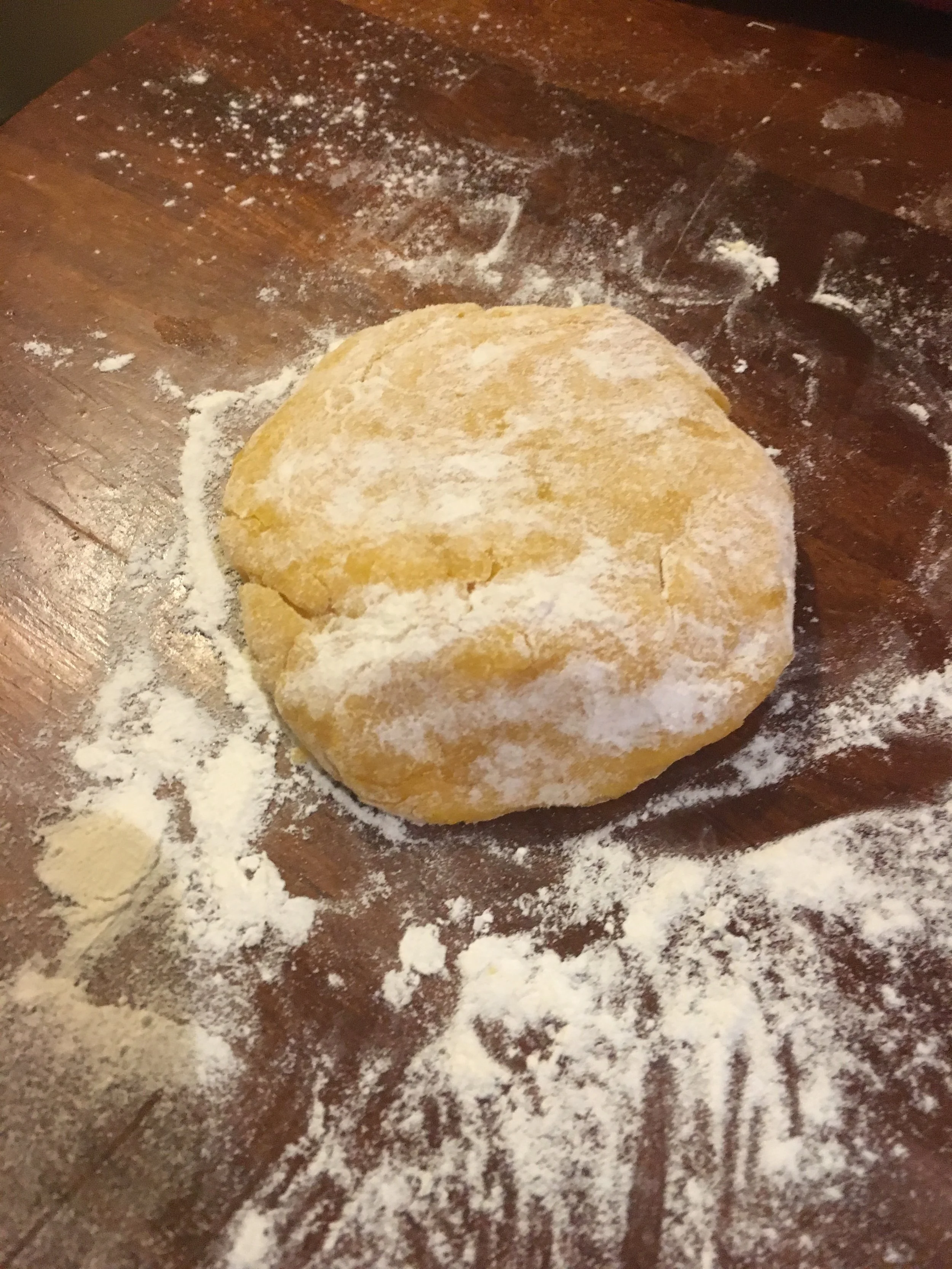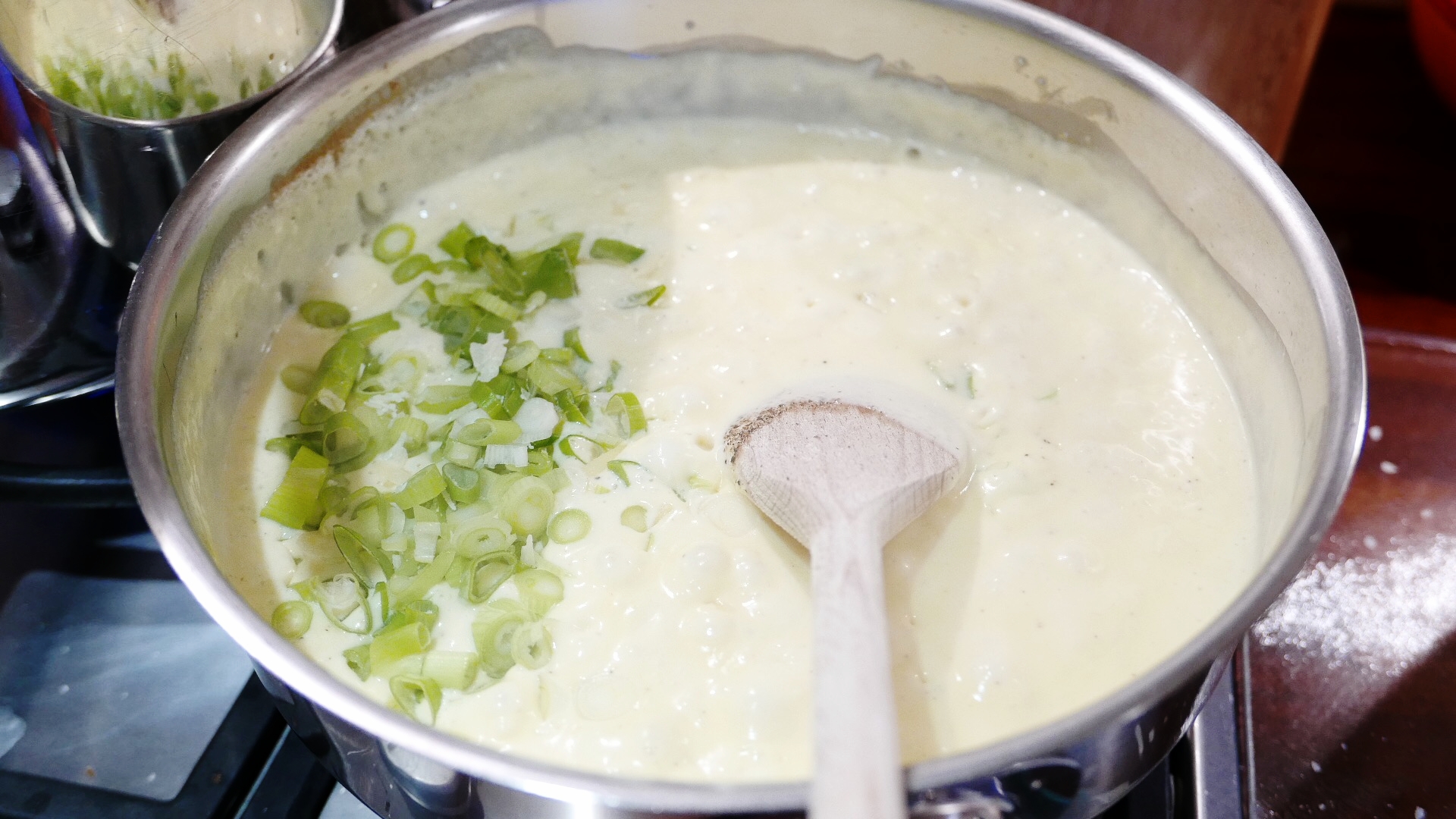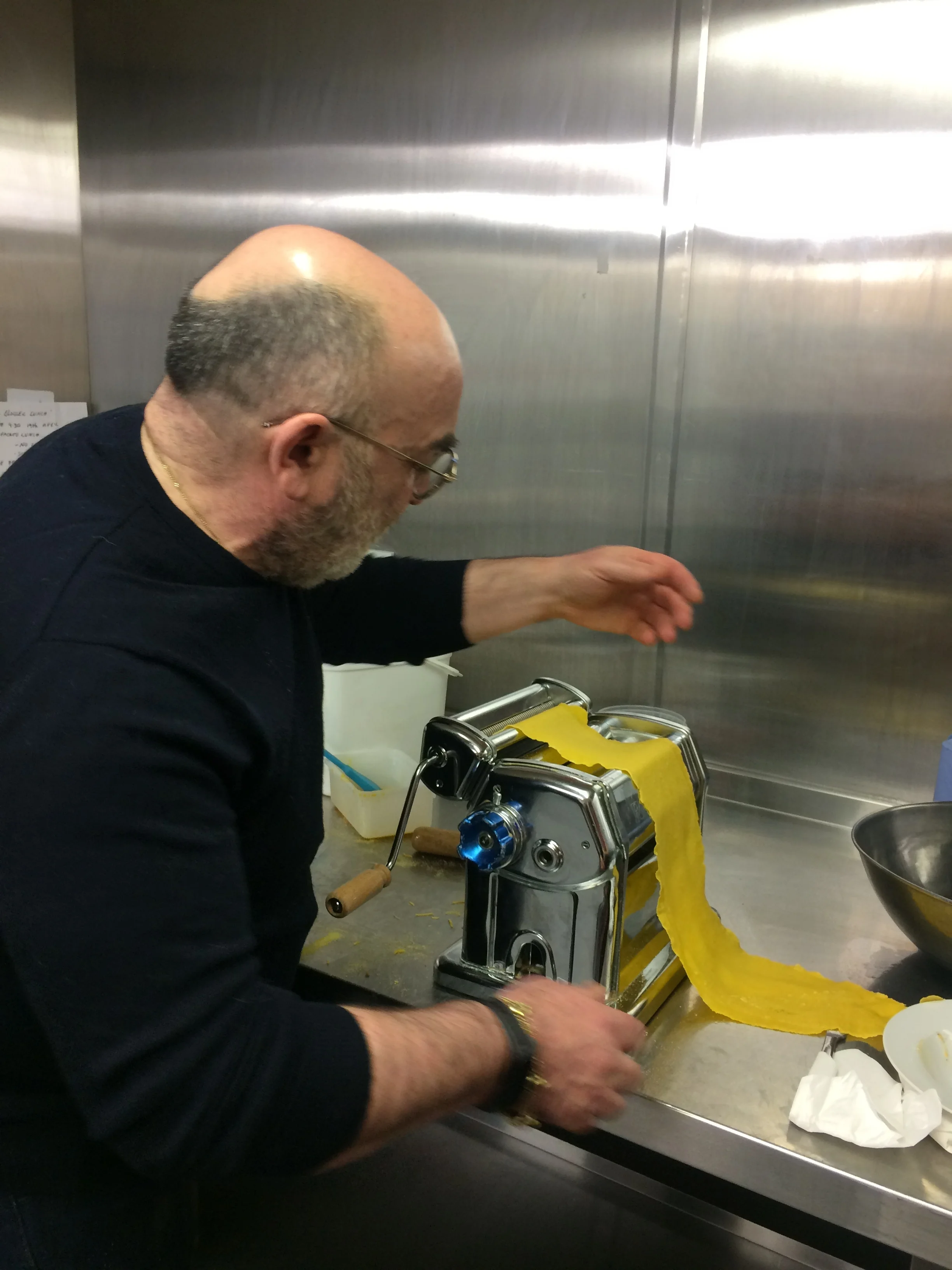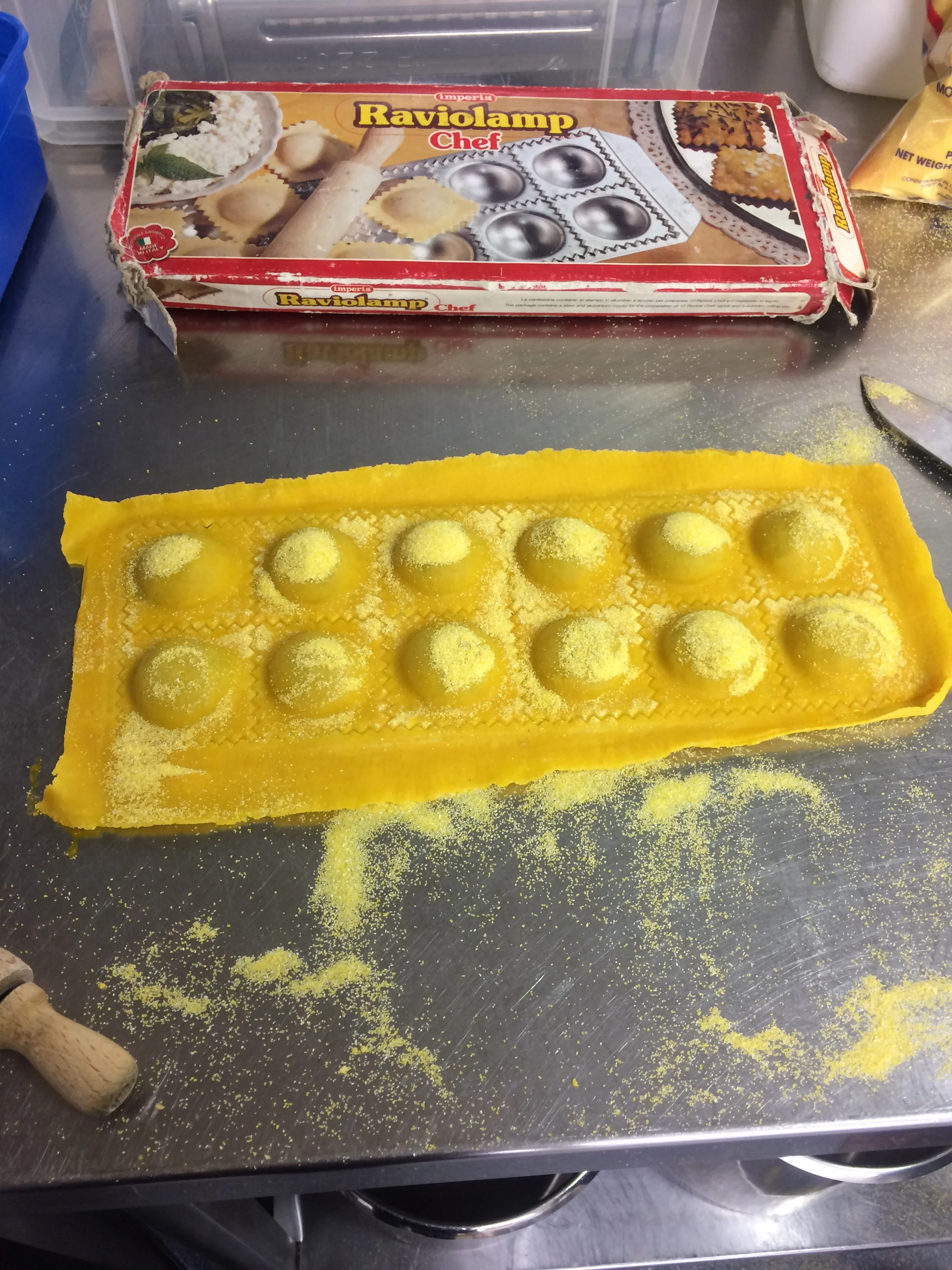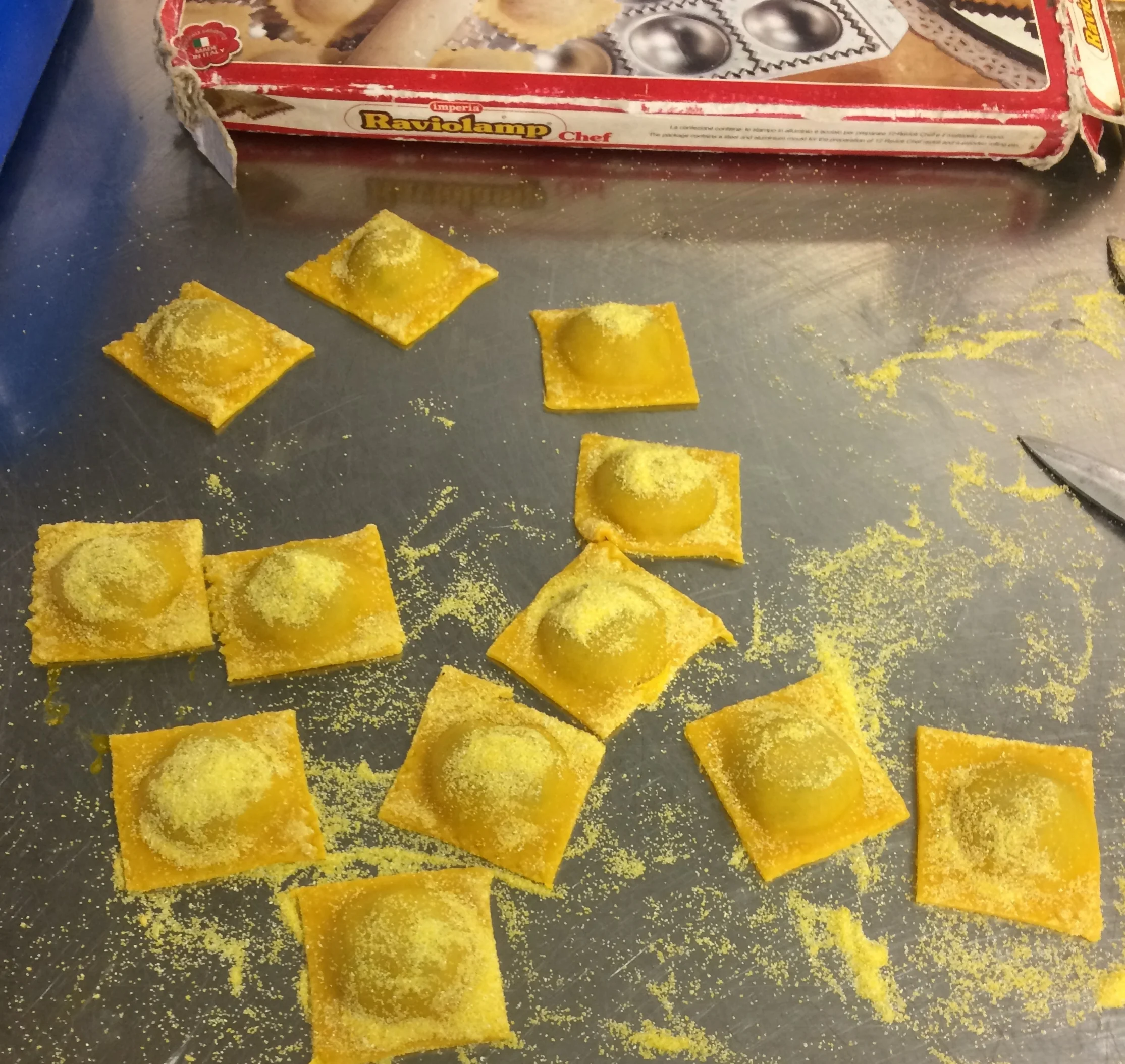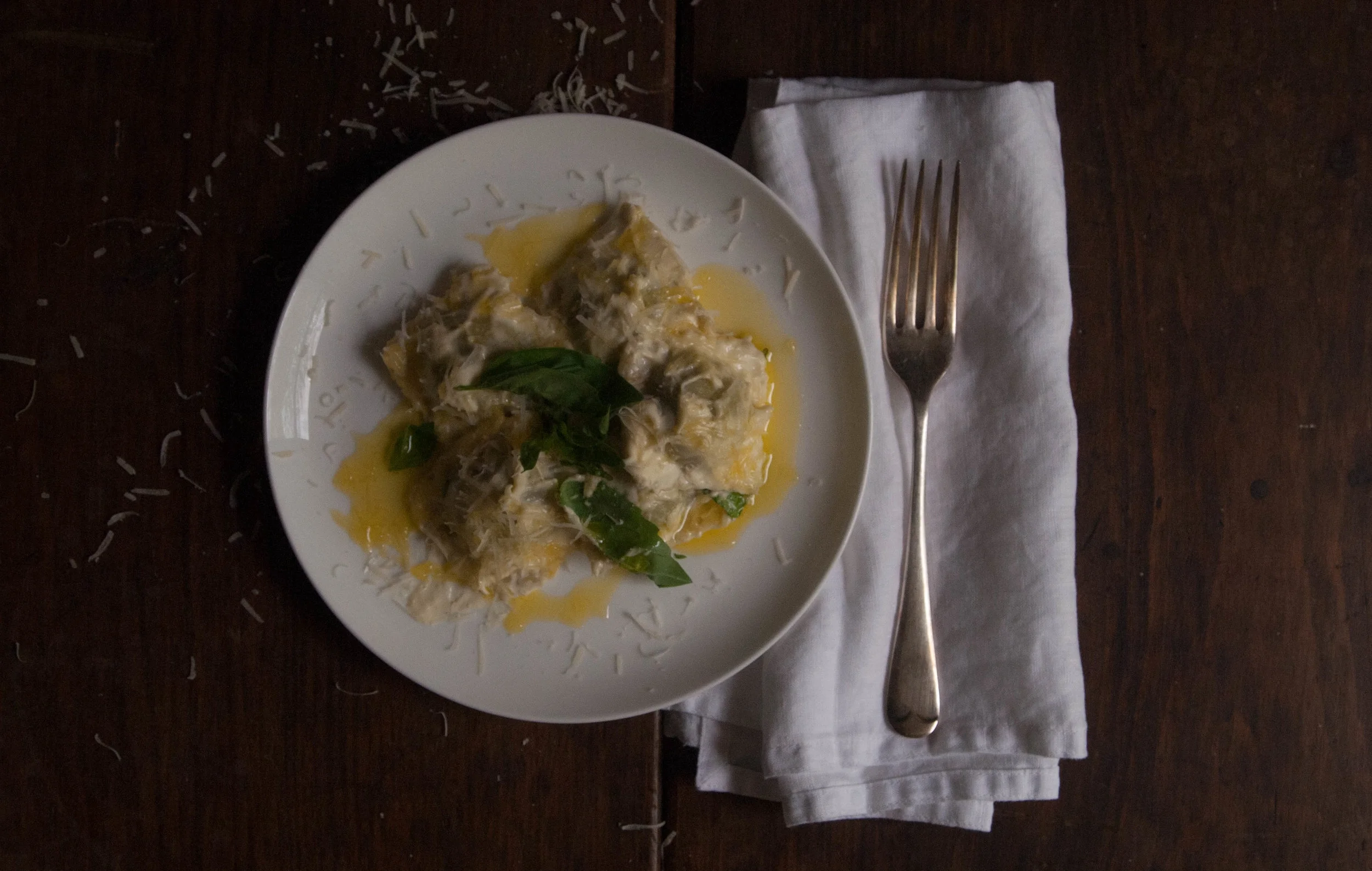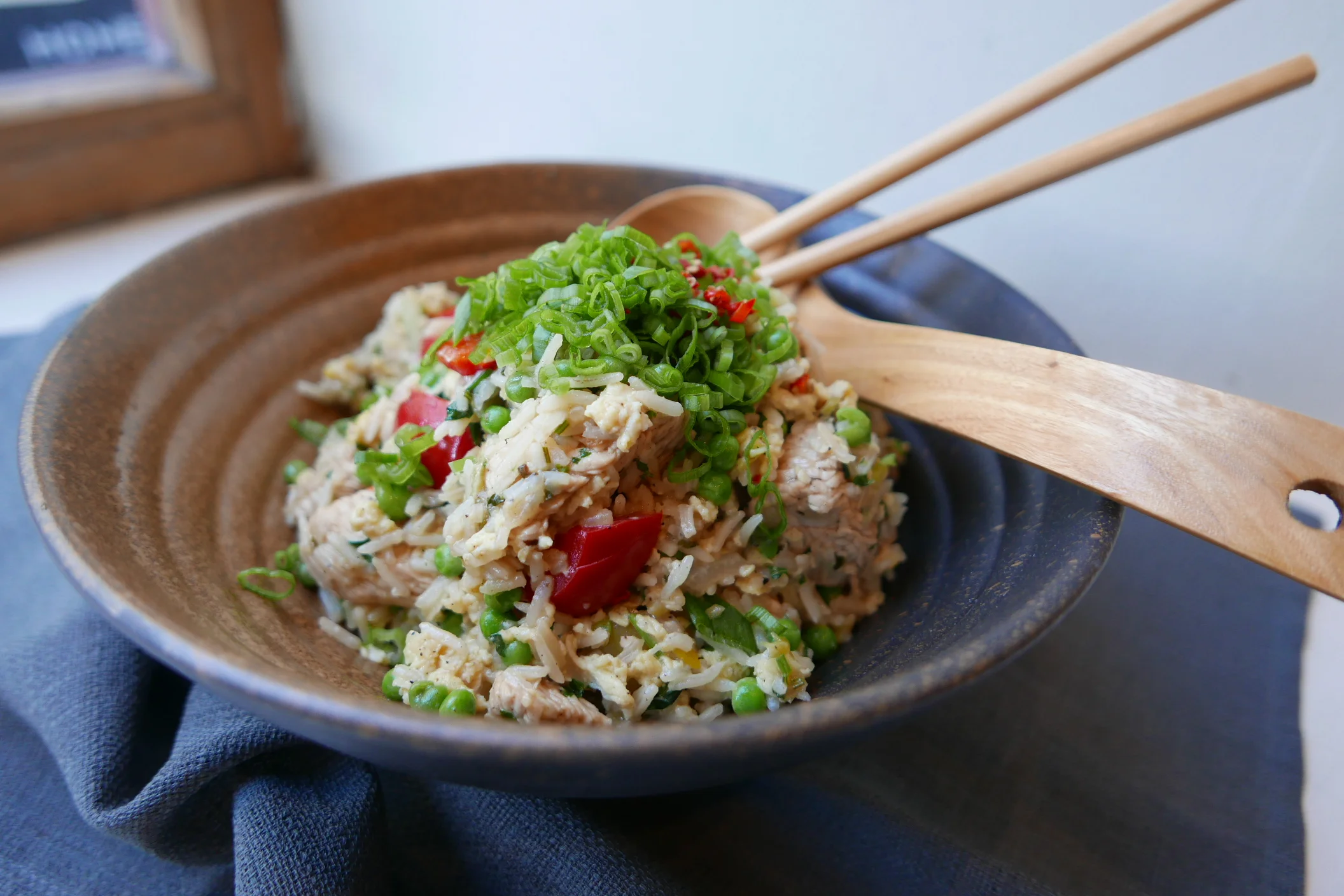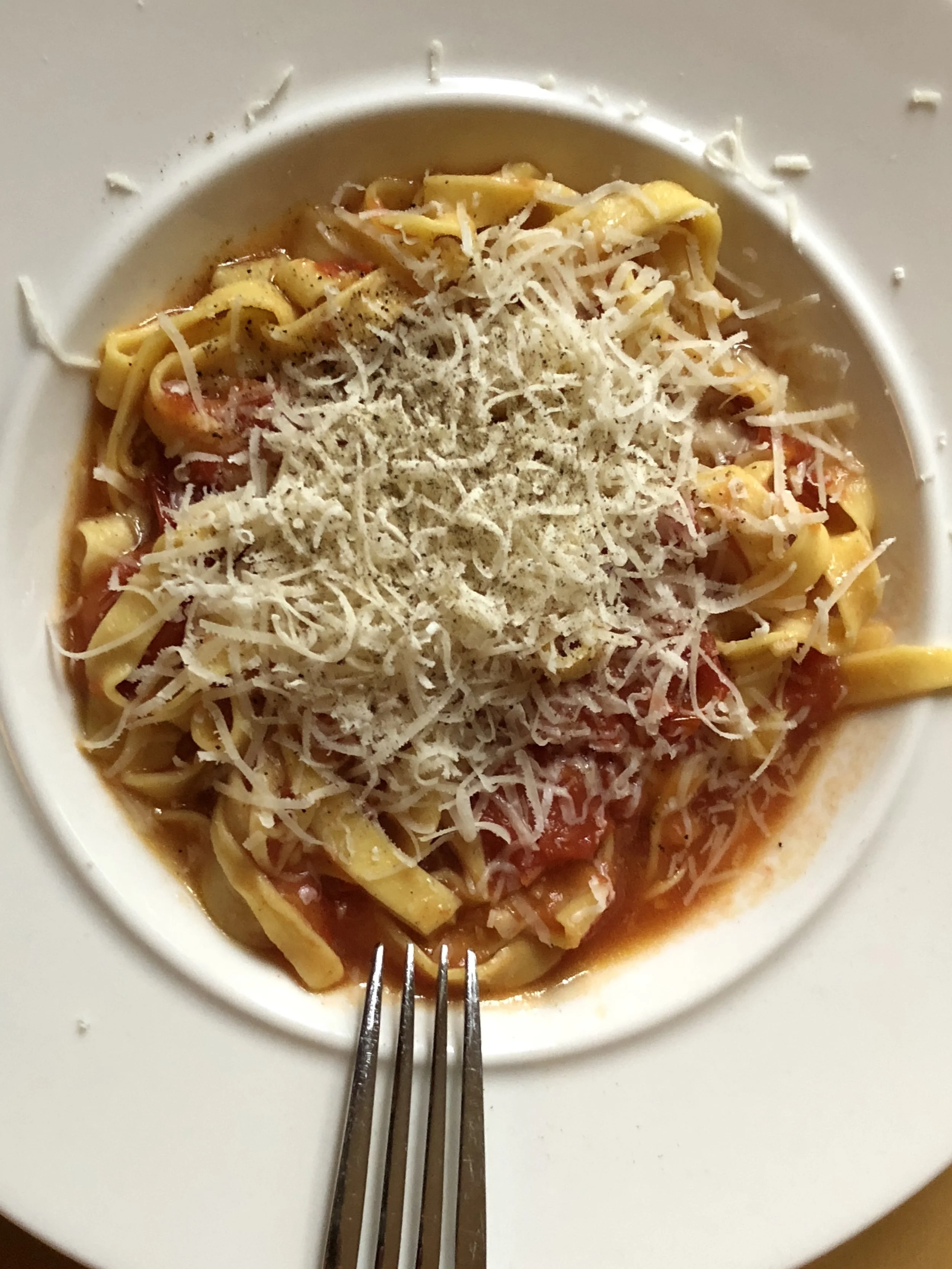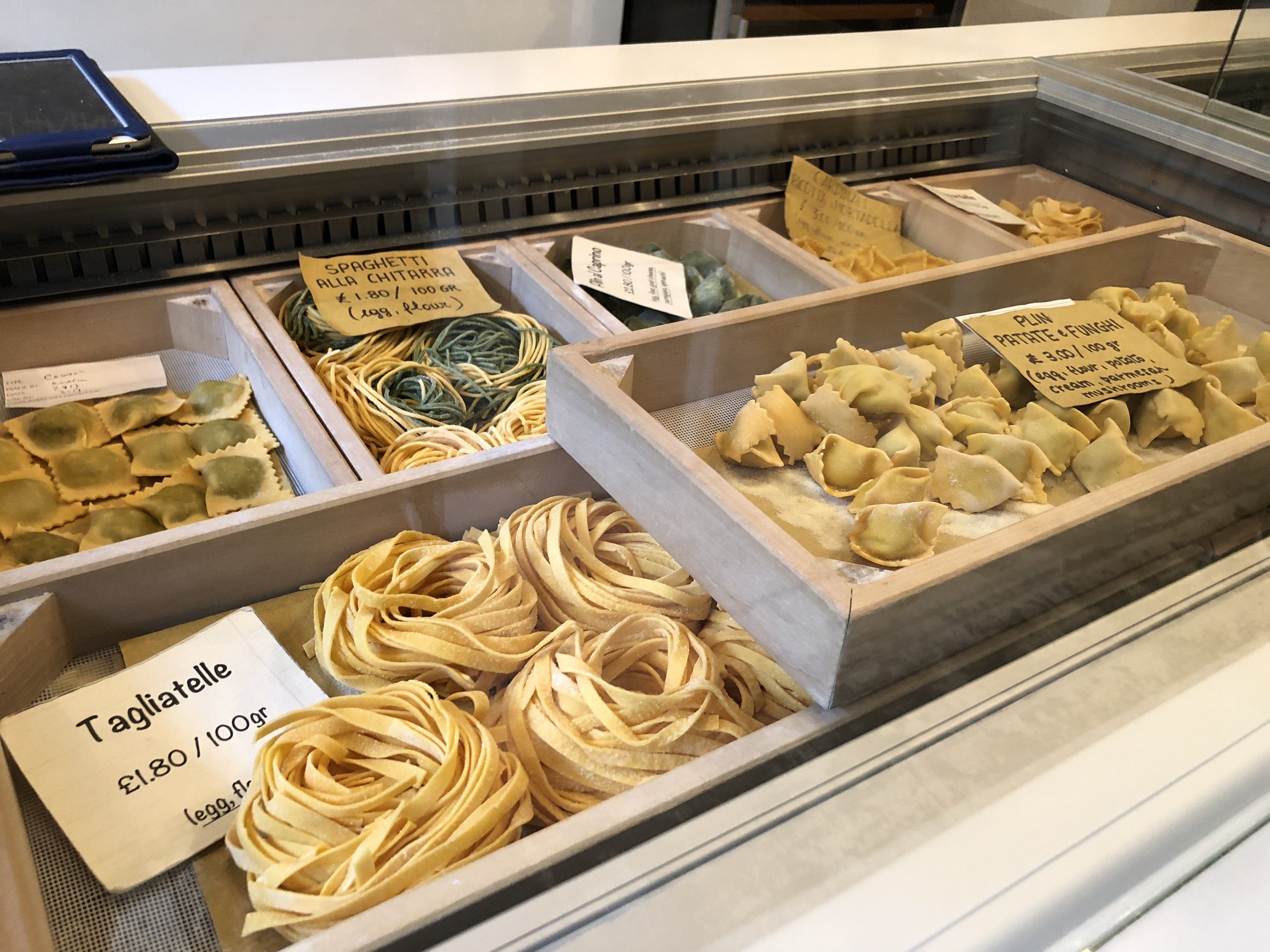Spinach & Ricotta Ravioli
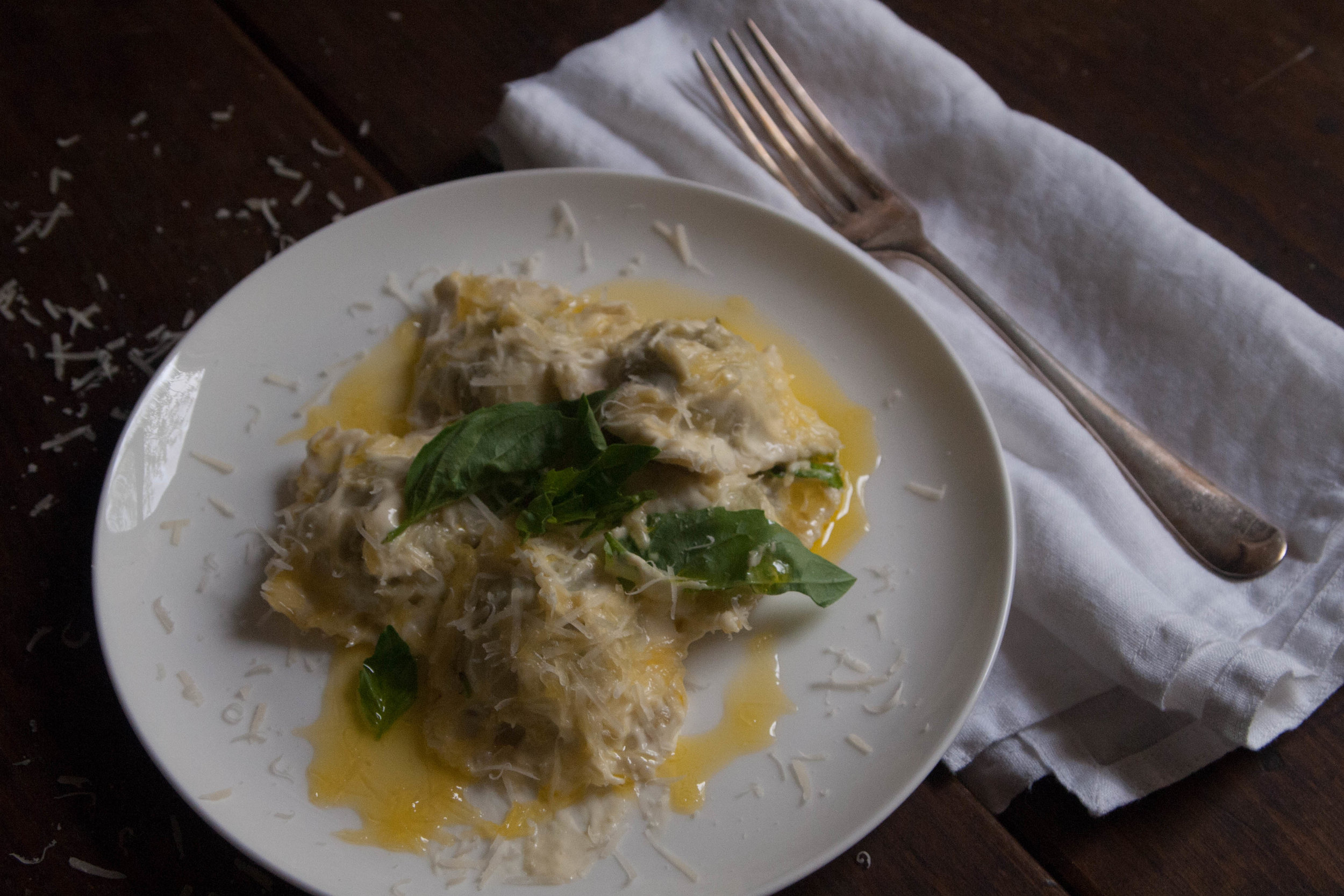
Spinach & Ricotta Ravioli with a Parmesan Cream Sauce
For my first blog recipe I’ve chosen ravioli. Since early childhood I have loved these plump parcels of pasta filled with just about anything. From the dinner I ate lakeside one Tuscan evening as a randy little teenager to the ravioli I used to gorge straight from the tin at boarding school and all the plates since, I have loved every mouthful.
The Flour, semolina olive oil and Italian eggs are available from Pane E Vino, 208 Fenwick Road, Glasgow, G46 6UE
Kitchen Aid mixer and pasta roller attachment from Steamer Trading Cookshop, 35 Gordon Street, Glasgow, G1 3PF
Everything else is widely available.
For the ravioli pasta:
300G Type 00 plain flour
100G Durum wheat semolina
4 Italian eggs
Small sploosh of extra virgin olive oil
Salt flakes
Freshly ground black pepper
For the ravioli filling:
500G Frozen chopped spinach (defrosted and drained) You can use fresh of course it won’t really be any better but you will need to double the quantity
200G Ricotta cheese, if you can get buffalo milk ricotta that’s best but any old coo will do, and moo!!!
Freshly grated nutmeg (optional)
Salt flakes
Freshly ground black pepper
Lemon zest (optional)
For the Parmigiano sauce:
Extra virgin olive oil, don’t skimp it makes a big difference
250G fresh Parmigiano grated. Do not use the stuff in tubs that smells like grated feet
0.5Ltr double cream. If sauce becomes too thick you may wish to add more
1 Italian egg, whisked (optional)
Chives or spring onions, finely chopped
Basil, sage or chives to garnish
Black pepper, ground
The cheese is salty enough, so no extra salt required
Equipment you will need:
Ravioli mould tray
Sharp knife or zig zag cutter
Kitchen Aid mixer
Kitchen Aid pasta rolling attachment
Cheese grater
Zester
What to do:
1st. You make the pasta dough;
Combine flour, semolina, eggs and all seasonings in either the bowl of a food processor or food mixer. My preference lately has been in the food mixer but it doesn’t really matter. Switch on your machine and mix; you should have a dough that loosely resembles dry breadcrumbs. It mustn’t be wet nor too dry. If it is either, a little more oil or flour will rectify the issue. Tip pasta onto a clean floured surface and knead for at least 10 minutes. Divide dough into 4, wrap in cling film and put in refrigerator for about an hour. You could do this the day before.
OR, if you’ve got too much spare time;
make a mountain with dry ingredients on a cool flat surface, form a hollow in the centre, tip in the eggs & oil then gently work the ingredients together. Knead vigorously until you feel your dough is dry and elastic. Divide, wrap and chill as above.
2nd. Filling;
Combine all ingredients as above, mix well and put to one side. The nutmeg and lemon add additional depth to the taste, but it’s a personal thing.
3rd. The sauce;
Pour a good sploosh of oil in your pan/pot over a medium heat. Add your chopped chives or spring onions, soften but do not burn. Next, 2/3 of your double cream, stirring gently. Mix in your cheese, season with pepper and keep stirring until it has all melted and coats the back of a spoon. If your sauce is too runny add more cheese, if too thick then it’s cream. Take it off the heat and mix in your beaten egg if using. Taste it…. Is is wonderfully creamy, cheesy and lush? Yes = result. No = fix it.
4th. Let’s get cooking;
You will need a pasta roller, either manual or electric at this point. Life is way too short for manual rolling so buy yourself, or borrow (not from me), the attachment for the Kitchen Aid mixer, my choice. Also required is a ravioli cutter or tray. Imperia make a lovely little manual rolling machine if you have the patience.
Whatever rolling choice you make, you start by putting one of your pasta balls, flattened, through the widest setting. You do this twice then decrease the roller opening by one notch after every two presses, until you have reached the desired thickness. On my pasta roller this is about four.
Lay the sheets of pasta on a well floured surface. A ravioli mould tray is the simplest way to form your little parcels. Place a sheet of pasta on top of the floured mould and gently press down into the individual ravioli shapes. Spoon in a little of your spinach mixture, don’t overfill or they’ll burst. Make sure you press out all of the air, if not this will cause problems when cooking. Egg wash the pasta around the ravioli shapes. Delicately lay another sheet of pasta on top and with a small rolling pin seal the ravioli.
Carefully turn mould over and gently ease the sheet of ravioli out of the tray. With a sharp knife, or zig-zag cutter separate the raviolis and place on a drying rack for a short while. If you plan to keep them you should freeze them on a flat tray then store in a sealable tub.
If you are ready to eat, bring a pan of salted water to a rolling boil and drop your pasta for 3 or 4 minutes. Drain, add to sauce pan and coat with sauce, not too much mind!!! Plate and garnish with your preferred greenery. Eat with salad and some bread for dooking.


